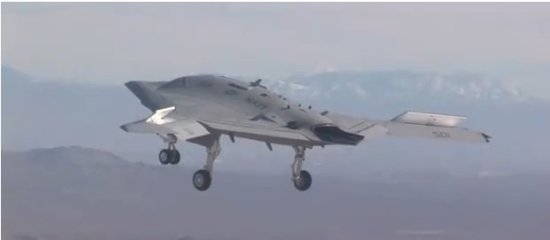Stealthy UAV Completes its First Flight
Aeronautics giant Northrop Grumman has announced the successful first flight of their stealthy X-47B unmanned combat aerial vehicle (UACV) on Februay 4th at Edwards Airforce Base in California. For the Airforce, and Northrop Grumman, this is a major step forward as they look to deliver an aircraft capable of aircraft carrier-based autonomous take, off landing, and in-flight refueling. After completing it’s 29 minute flight this past week, the aircraft will undergo more testing before beginning carrier trials in 2013.
Though aerial drones are, for the most part, well understood by the general public, the X-47B is unique amongst the drones that have made the headlines thus far. Most apparent is its appearance, which is stealthier and more compact, similar to the flying-wing design of the B2 “Spirit” bomber. Also unusual is the focus on a combat role, and the intended operating environment of aircraft carriers.
Of course, it’s not the only stealthy UAV on the airfield. Already sighted in Afghanistan is the so-called “Beast of Kandahar, ” the Lockheed RQ-170. While the development of UAVs for new roles and environment is to be expected with the apparent (albeit secret) success of the “drone war” in Pakistan. However, these particular aircraft might signal a shift in drone development. The near-ubiquitous Predator and Reaper drones that have been in the headlines were fielded with the knowledge that the enemy they were observing and attacking did not posses the radar technology to effectively counter them.
Though I am not an aeronautics expert, nor a strategist, the development of the X-47B and the RQ-170 would seem to indicate either a concern or an interest in engaging with a more technological enemy. One that could, conceivably, detect and shoot down a craft like the Predator. While it is interesting that the X-47B will be designed for combat, it’s role as a “low observable” vehicle may prove to be the most significant.
The Depart of Defense is a strange beast, and it’s dangerous to read too much into their purchases or development plans. The DoD tends to plan for a projected “next war,” and make its plans accordingly. But as the history of counter-insurgency in Iraq and Afghanistan have shown, the military is not always very good at predicting outcomes — though it can be quite adaptable after the fact. These new drones may be a product more of hypothetical concerns than anything else. Regardless, drones are becoming more and more common place (Wired says “1 in 50 troops in Afghanistan is a robot.”), meaning that it is a near certainty that the X-47B won’t be the new kid on the block for long.
(via Engadget)
Have a tip we should know? tips@themarysue.com
